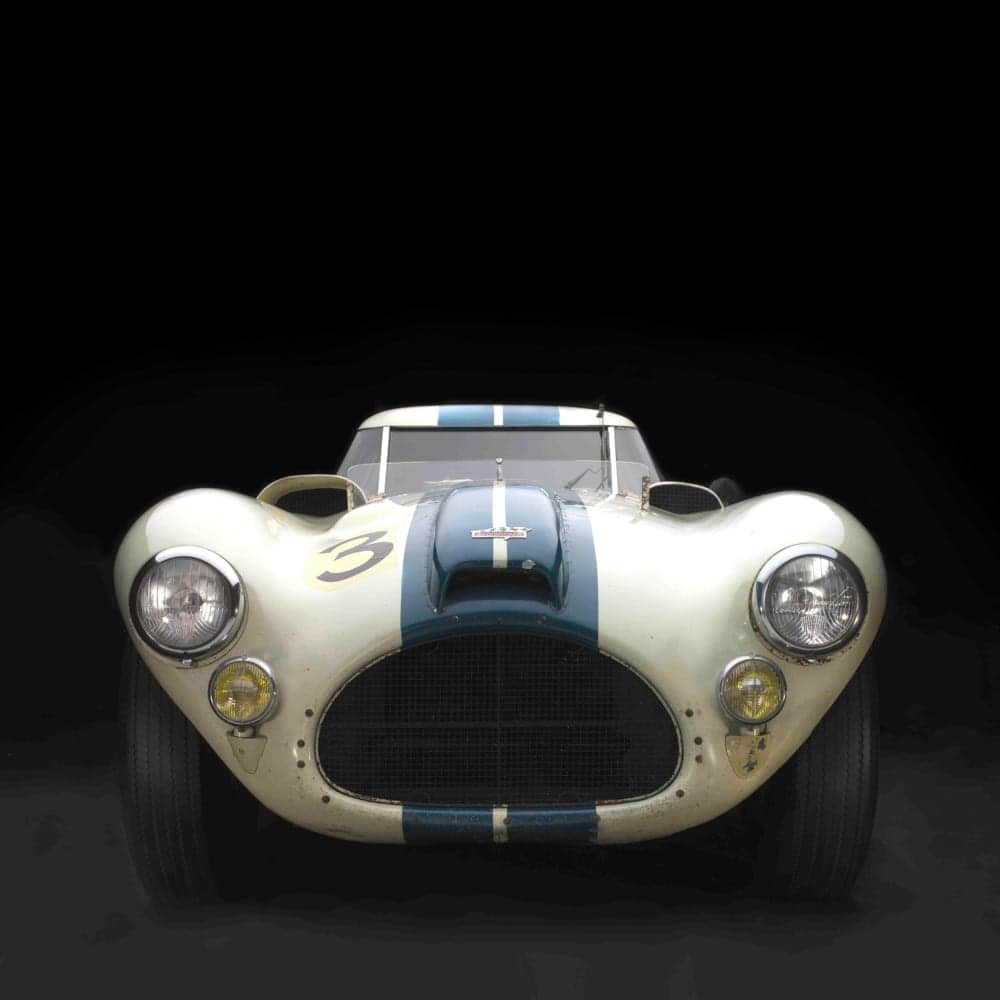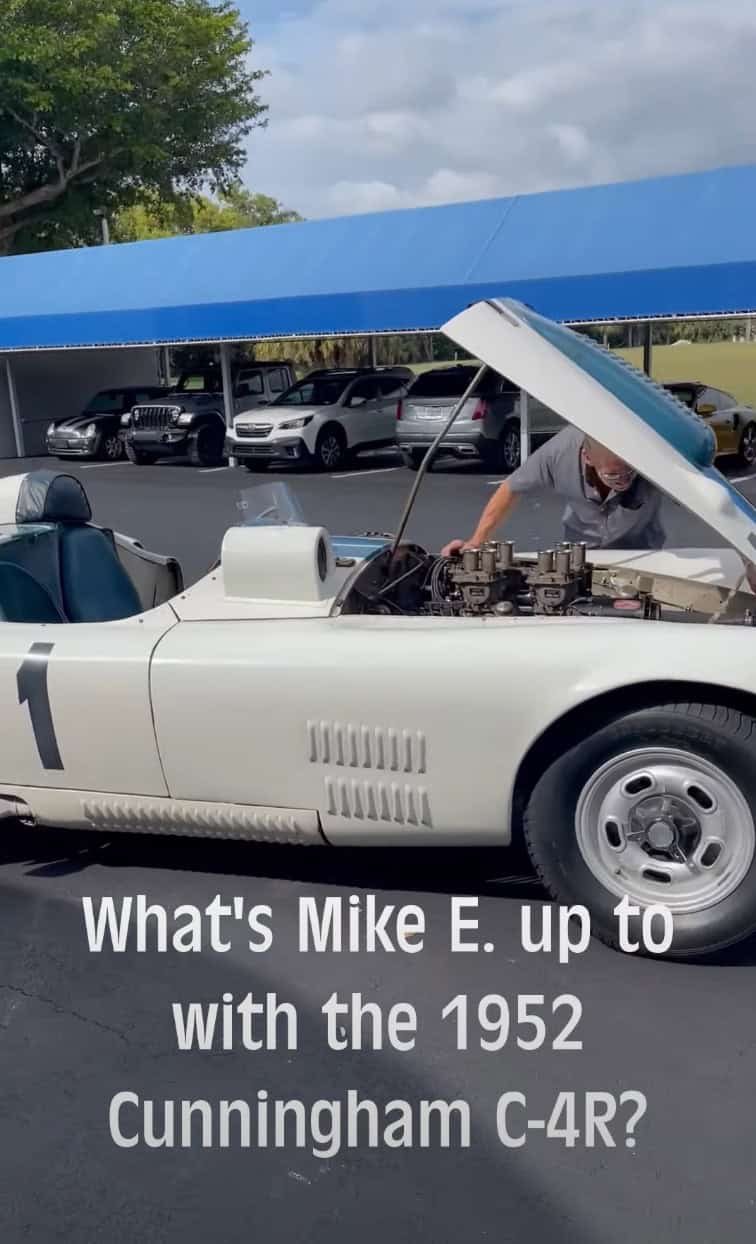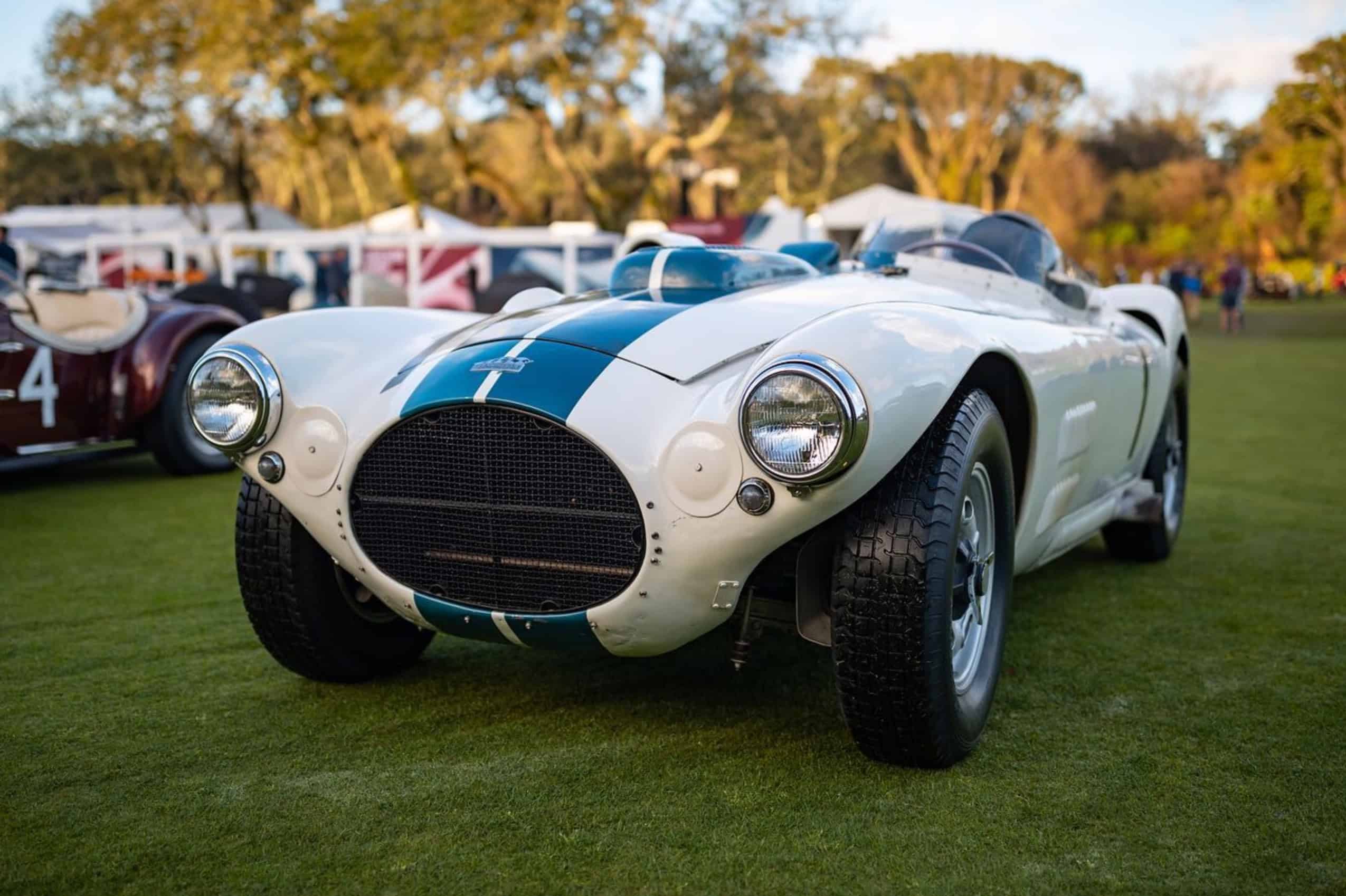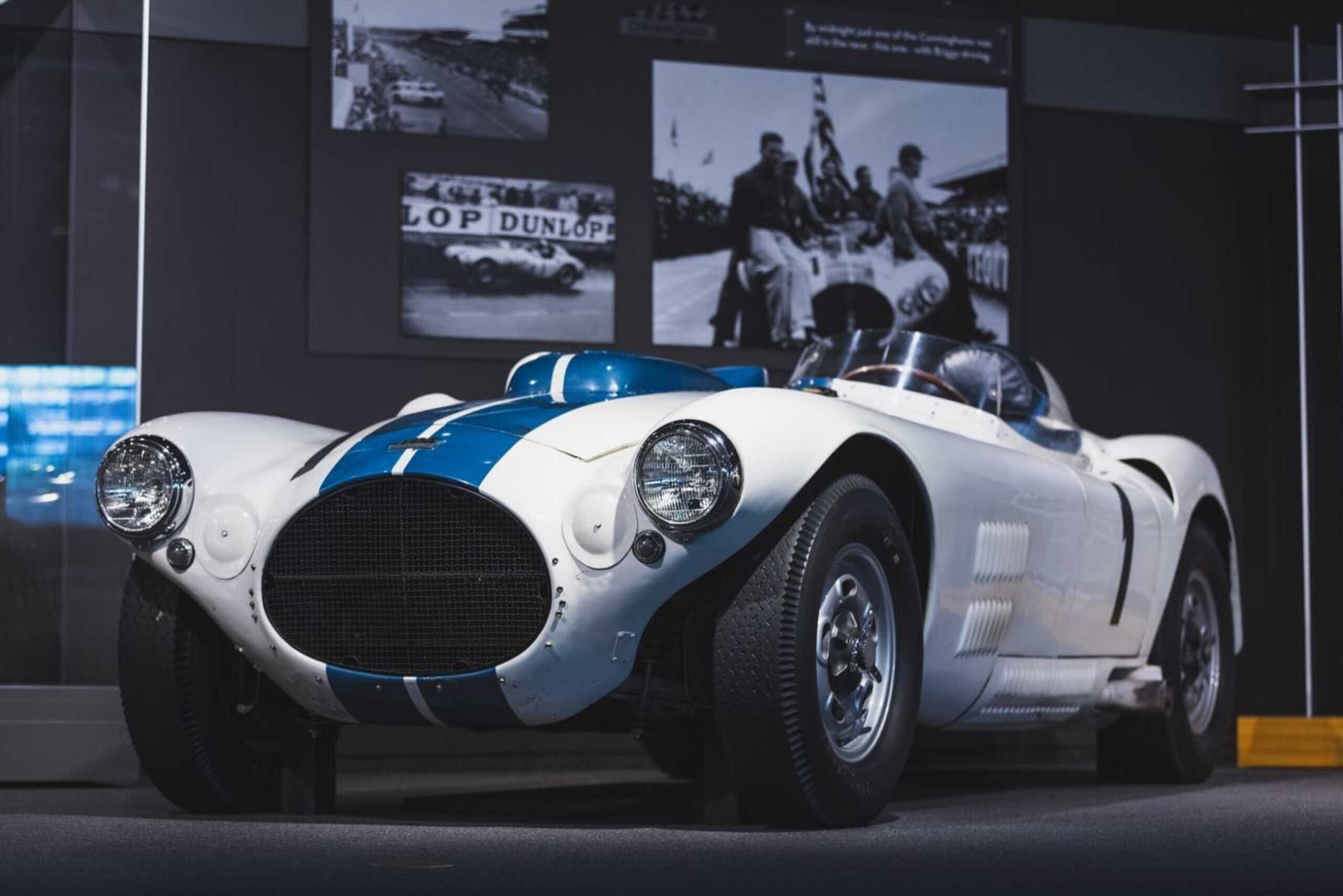By 1951 the Cunningham practice was to use “R” to designate racing cars. The “K” added to this one referred to Dr. Wunibald Kamm, a German scientist brought to this country after World War II. Reducing drag coefficient was his special area of expertise, Kamm being the first to demolish the theory that race cars were most competitive with long, pointed tails. Aerodynamically efficient Kamm-back coupes proliferated after the war. This Cunningham is a Kamm-back but with a difference. It is the only car known to have received the personal touch of Dr. Kamm himself, who made a quick trip to West Palm Beach to flatten this Cunningham’s tail.
With its high beltline, low roofline, twin scoops on the cowl and louvers all over, the C-4RK looked absolutely menacing. Nevertheless, the car’s claustrophic cockpit had persuaded Briggs that this was one Cunningham in which he did not care to compete. Consequently, driven by Phil Walters at Le Mans in 1952, the car was indeed intimidating as it stormed into the lead shortly after the start, with a pair of Ferraris and a Jag in frantic pursuit. The pace was too hot to last. A car has to finish to win, and the C-4RK didn’t. Valuable time was lost when Walters’ co-driver Duane Carter, who was used to driving the oval at the Indianapolis, smacked into the sandbank at Tertre Rouge and spent nearly two hours digging the car out. By midnight the C-4RK succumbed to the valve gear trouble that had also finished the race for the Fitch-Rice C-4R roadster, leaving Briggs alone on the course in the remaining Cunningham (which is displayed alongside).
Nonetheless, while it was running, the C-4RK had proved as ferocious as its appearance. Walters’ 105.6 mph second lap was the Cunningham team’s best that year, and was even a bit quicker than the winning 300SL Mercedes’ fastest lap as well.
Campaigned back home in 1952, the C-4RK, driven by Phil Walters, won at Thompson and Allentown, and set a new record at Giant’s Despair.



